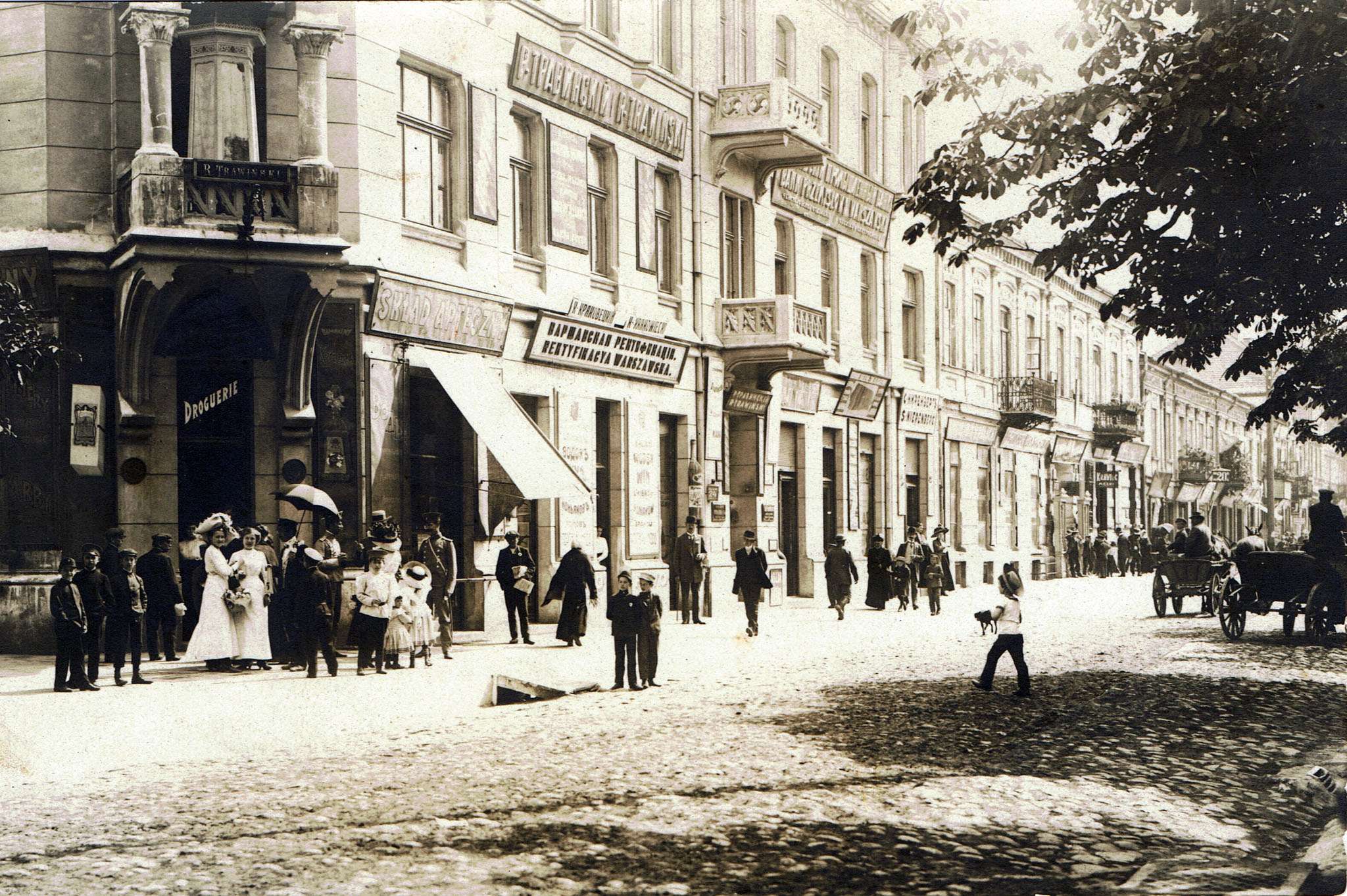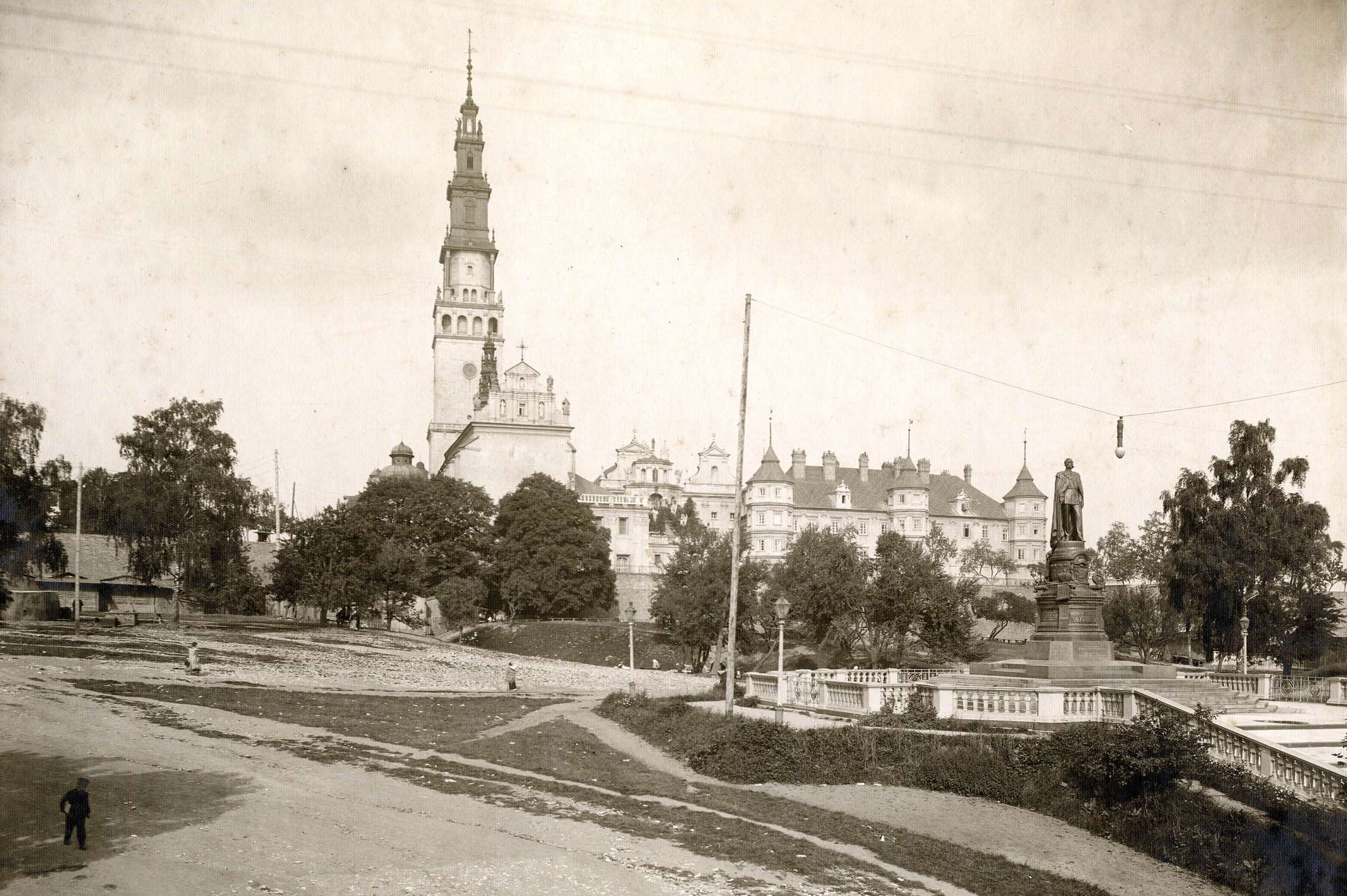
Located in the Raków district the archeological heritage park which protects "in situ" the cemetery from the Hallstatt Period (700-400 B.C.), proves about the existence of the settlement from the Bronze Age and early Iron Age on the current lands of the city of Częstochowa. Perhaps during those times Częstochowa was a local center of metallurgy. During the country of Vistulans (9th - 11th century) there was a fortified town on a hill Gąszczyk, a city of Vistulans located the farthest to the north-west.

The probable beginnings of Częstochowa are associated with a settlement and fortification defending the town on Warta. The first reference about developing town, located on the border of Małopolska and Wielkopolska, at the junction of the river and an important pathway leading from Cracow through Olkusz and Kalisz to Poznań, comes from a document of the Bishop Iwo from Cracow, from 1220. The name of Częstochowa for the first time was mentioned in the privilege given to the Monastery in Mstów.
The development of the settlement takes place in the 14th century when the “beef” trail linking Moldova and Wrocław led through Częstochowa. With the privilege issued in Krzepice in 1357, Casimir III the Great locates Czestochowa on the Magdeburg Law.
In 1370 Częstochowa became a fiefdom of Władysław, Duke of Opole, Palatine of Hungary and ruler of Ruś Halicka. In 1377 Częstochowa is defined a city. In the same year a document confirms the foundation of the first ironworks in the city.
Short, two decades period of activity of Władysław Opolczyk marked in the history of Częstochowa with two important facts, making its later development. It was a foundation of the monastery of the Pauline Fathers and getting the city rights..

A document of foundation of Jasna Góra Monastery from 1382, the collection of the library of Jasna Góra
In 1382 Prince Władysław Opolczyk in an old church at Jasna Góra put the miraculous Image of Holy Virgin Mary, brought from Russia, and was entrusted to the Pauline Fathers who came from Hungary. For the headquarters for Pauline convent of St. Wawrzyniec, Prince Opolczyk chose a church located on the fortified hill hulked over Częstochowa. He generously endowed the monastery, giving it located nearby villages, farms and ironworks. The miraculous image of Madonna began to attract believers from Silesia, Moravia, Prussia and Hungary. Since 15th century the Sanctuary is a place of numerous pilgrimages and with time becomes the most important pilgrimage center in Poland.
By the end of 18th century the city of Częstochowa (one of the biggest cities of Małopolska, a merchant and craft center) develops as well as surrounded by the settlement Częstochówka – the Monastery of Jasna Góra.

The Code “Regula S.Augustini” from 1512, the collections of the Library of Jasna Góra
The medieval city of Częstochowa was surrounded with walls. At the main square were the town hall, stalls, the Cloth Hall. The economic life of Częstochowa and its development were increasing successfully thanks to numerous privileges for example at fairs, bazaars and by collecting bridge toll.
The townspeople worked in trade, craft, but also agriculture, horticulture and animal husbandry. The taverns and inns were opened, although the support for the growing number of pilgrims was rather given by the nearby villages.
In those days, the local government was created from the city council including the mayor, three aldermen and six councilors who had been recruited from previous two councils. In the 15th and 16th century the development of the city had been hampered by a number of disasters – invasions, robberies and fires.
The defensive qualities of Jasna Góra hill were the reason for building fortifications around the monastery. At the beginning of 17th century the fortress of Jasna Góra was incorporated in the system of fortified castles stretched lengthwise of the Kraków-Częstochowa Upland and formed a shield against threats from Silesia.
Swedish Deluge
The most important event of the history of the Frist Republic of Poland was a siege of Jasna Góra Monastery by the Swedish armies (November 18th – December 26th 1655) was popularized by Henryk Sienkiewicz in his book “The Deluge”. The heroism of the defense caused that on April 1st 1656 King John Casimir declared Holy Mother “The Queen of the Polish Crown”, and thanks to that the Sanctuary in Częstochowa became the most important National Sanctuary.

A drawing of Nova Gigantomachia by A. Kordecki, from 1717, the collection of the Library of Jasna Góra
In 1717 Pope Clement XI made a coronation of the Miraculous Image, more than 200 thousand pilgrims attended in the ceremonies. Another important military episode in the history of Jasna Góra was the defense of the fortress during the Bar Confederation (1770-1772); the commander of the defenders was a hero of two continents Casimir Pułaski.
Frequent acts of war did not spare the city. Częstochowa was destroyed and robbed. The 17th and 18th century were the years of its deepest fall. The number of residents decreased by half, many houses were shattered and the economic situation was catastrophic. However the fame of the Monastery and the miraculous image of Our Lady were attracting numbers of pilgrims. At the beginning of 18th century a quickly developed settlement belonged to the monastery, located on the road to Wieluń, received city rights as New Częstochowa.
Partitions and time of industrial prosperity of the city
In 1793 Częstochowa was seized by the Kingdom of Prussia. In 1807 occupied by Napoleon's armies (the ploy used by Napoleon's army is described by W. Gąsiorowski in “Hurricane”). Since 1813 the city and the monastery were seized by the Russians.
The 19th century was a period of an unprecedented development of Częstochowa. The foundation for the dynamic development of the city was the connection of New and Old Częstochowa in one urban center. Formal approval of this fact came with the decision of the Administrative Council of the Kingdom from August 19th 1826 with attached rights and privileges of provincial city to Częstochowa. The head of new government was the first Mayor of the city of Częstochowa – Józef Gąsiorowski.
The main thoroughfare designed with flourish became the composition axis of the joint city organism and at the same time the shortest way to connect the Old Market with the Monastery and New Częstochowa, enabling the mass of pilgrims to reach the goal of their peregrination.
Lined with trees the Avenue of the Holy Virgin Mary has become over time the most characteristic element of the city.
On the length of the Avenue were built three squares: near the Old City in front of the church of St. Zygmunt – the New Market, in the halfway towards Jasna Góra – St. Jacob's Square, in front of the monastery – the Market of Jasna Góra. The embankments and trenches forming the ground fortifications of the fortress of Jasna Góra were dismantled and the city parks were created on the hills.
The period of January Uprising was very chaotic. Before the uprising many patriotic demonstrations took place (including a Polish-Jewish one), in the battles in the area (including the battle near Kruszyna, Janów, Mełchów, Żarki) participated the inhabitants of Częstochowa. In retaliation for supporting the insurgents the repressions were put on Jasna Góra – the most of its goods were confiscated, and the admissions for novitiates had been stopped. The repressions limited the development of the monastery until the beginning of 20th century. The revival of the monastery took place after the re-coronation of the Miraculous Image in 1910.
In 1846 the Warsaw-Vienna Railway line was opened and it gave the new impulse of economic development to the city. Many manufactories and factories were opened. The industry of textile, metallurgy, wood and chemical were developed. Częstochowa became the fastest developing city of the Polish Kingdom, while being a well-known center of metallurgy (Huta Hantkego – Ironworks), French textile, Belgian and Polish textile factories, leather goods (thanks to development of this industry and the toy industry Częstochowa owned a name “Polish Norymbergia”). On the beginning of 20th century Częstochowa was the 4th largest industrial center of Polish Kingdom. The recognition of the importance of the city was organized in 1909 the Industry – Agriculture Exhibition, the largest presentation of Polish economy before World War I .
Interwar period and World War II
In 1918 Częstochowa became a city of the Second Polish Republic. Inscribed in the history with the support during the Silesian Uprisings 1919-1921; hundreds of volunteers also fought in the defense of Warsaw in the Polish-Bolshevik War. Częstochowa was also a place in which approx. 2 thousands senior officers of the Ukrainian Army of General Semen Petlura and most of the ministers of the Ukrainian government were located.

Częstochowa, the beginning of 20th century
A border location of the city was a reason why it became a garrison for the headquarters of 7th Infantry Division (under the command of General Juliusz Gąsiorowski). During the period of independence, the city had been developing steadily, the sewage system was built, the new highway to Warsaw was built. Before the war the population was 137 thousand - 10th in terms of size of an urban center in Poland.

Jasna Góra, the beginning of 20th century
During the interwar period the aqueducts and sewage system were built in Częstochowa. The power plant was built, the condition of roads was improved, the public transportation was developed. Many public buildings were built for example the theater, the county offices building, post office, hospital, home of crafts, numerous schools and urban playground.

Market at the New Market Square, the beginning of 20th century
Nazi troops occupied the city on September 3rd 1939. A day later, the massacre carried out by the Wehrmacht took lives of more then 200 inhabitants. In Mokra, a village near Częstochowa, between September 1st and 3rd took place one of the biggest battles of the September campaign. During the occupation the resistance was very strong, especially of the formation NOW-AK. A huge drama met Jews in Częstochowa – the massacre at “large ghetto”initiated on September 21st 1942 and cost lives of nearly 30 thousand people. After the Warsaw Uprising Częstochowa became the capital of the Polish Underground State. There were the Headquarters of Home Army with its commander General Leopold Okulicki – Niedźwiadek. Here also operated the largest “underground” university created by the scientists of University of Warsaw, Poznań, Warsaw School of Economics, Warsaw Agricultural University, the Medical University of Warsaw and Vilnius. On January 16th 1945 Częstochowa was occupied by Soviet troops.
Modern times
After the war, there was a decision to build steel mill and making of Częstochowa a place for nationwide Central Administration of Iron Ore Mining. This had a significant meaning for the city. Quickly the new residential estates were built, including the houses for immigrants who held jobs in industrial plants in Częstochowa. The need to connect the areas near Steelworks with the new residential districts decided about building a tram line, which route became a new axis of the urban center. The establishment of state universities: Technical University and College of Education (now the Academy of Jan Długosz), and later non-public schools were opened which raised the profile of the city as a major academic center.
Today Częstochowa is a city with 250 000 inhabitants, an important economic, cultural, service and administration center in the area. Is also a destination for millions of pilgrims who annually visit Częstochowa.

The Act of granting the Honorary Citizenship to the Holy Father John Paul II
The city's landscape, visible from the Avenue of Holy Virgin Mary, with the prominent tower of Jasna Góra Monastery, is well-known in the whole world. This Avenue, which is on one hand a main shopping street – the center of the city, is also on the other hand the most important “Via Sacra” in Poland – a way for pilgrims who go to Jasna Góra, gives the city an unique advantage.